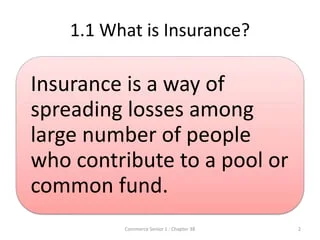The Pacific Prime Statements
Table of ContentsThe Buzz on Pacific PrimeThe Single Strategy To Use For Pacific PrimeAll about Pacific PrimePacific Prime Fundamentals ExplainedPacific Prime Things To Know Before You Buy

This is due to the fact that the data were gathered for a period of strong economic efficiency. Of the approximated 42 million people that were uninsured, almost concerning 420,000 (concerning 1 percent) were under 65 years of age, the age at which most Americans end up being qualified for Medicare; 32 million were adults between ages 18 and 65, about 19 percent of all grownups in this age team; and 10 million were kids under 18 years of age, about 13.9 percent of all kids (Mills, 2000).
These price quotes of the number of persons without insurance are created from the annual March Supplement to the Present Populace Study (CPS), carried out by the Census Bureau. Unless or else noted, national quotes of people without wellness insurance coverage and percentages of the populace with various kinds of insurance coverage are based upon the CPS, one of the most commonly utilized resource of quotes of insurance coverage and uninsurance prices.
The Main Principles Of Pacific Prime
:max_bytes(150000):strip_icc()/how-does-insurance-sector-work.asp-FINAL-1ccff64db9f84b479921c47c008b08c6.png)
Still, the CPS is particularly beneficial due to the fact that it creates annual estimates relatively promptly, reporting the previous year's insurance policy coverage estimates each September, and due to the fact that it is the basis for a regular collection of quotes for greater than 20 years, allowing for evaluation of trends in coverage over time. For these factors, in addition to the considerable use the CPS in other studies of insurance policy protection that exist in this report, we depend on CPS quotes, with limitations kept in mind.

The quote of the number of without insurance people expands when a population's insurance policy status is tracked for a number of years. Over a three-year period starting early in 1993, 72 million people, 29 percent of the united state population, lacked protection for at least one month. Within a solitary year (1994 ), 53 million individuals experienced a minimum of a month without coverage (Bennefield, 1998a)
6 out of every ten without insurance adults are themselves utilized. Although working does improve the chance that a person and one's family members will have insurance, it is not a warranty. Also members of family members with two permanent breadwinner have almost a one-in-ten opportunity of being uninsured (9.1 percent uninsured price) (Hoffman and Pohl, 2000).
All about Pacific Prime
New immigrants account for a significant proportion of individuals without medical insurance. One analysis has associated a considerable section of the current growth in the size of the united state uninsured population to immigrants who arrived in the country in between 1994 and 1998 (Camarota and Edwards, 2000). Recent immigrants (those who pertained to the USA within the previous 4 years) do have a high price of being without insurance (46 percent), yet they and their children account for simply 6 percent of those without insurance nationally (Holahan et al., 2001).
The connection between medical insurance and access to care is well established, as documented later in this chapter. Although the partnership in between wellness insurance policy and wellness end results is neither direct nor basic, a considerable professional and wellness services research study literature links medical insurance coverage to improved access to care, far better top quality, and enhanced personal and populace wellness condition.
Degrees of analysis for examining the impacts of uninsurance. It concentrates particularly on those without any kind of health and wellness insurance policy for any size of time.
What Does Pacific Prime Mean?
The problems dealt with by the underinsured are in some aspects comparable to those dealt with by the uninsured, although they are usually much less extreme. Health insurance coverage, however, is neither required nor adequate to obtain accessibility to clinical solutions. The independent and straight effect of health insurance protection on access to wellness services is well developed.
Others will get the health and wellness care they require even without medical insurance, by spending for it expense or seeking it from suppliers who supply care cost-free or at extremely subsidized prices. For still others, health insurance policy alone does not ensure invoice of treatment since of other nonfinancial obstacles, such as a lack of wellness treatment suppliers in their neighborhood, limited access to transport, illiteracy, or linguistic and cultural distinctions.
Not known Factual Statements About Pacific Prime
Official study about without insurance populations in the United States dates to the late 1920s and early 1930s when the Committee on the Cost of Medical Care created a collection of records regarding funding medical professional workplace group insurance plans check outs and hospital stays. This concern came to be significant as the varieties of clinically indigent climbed up during the Great Anxiety.